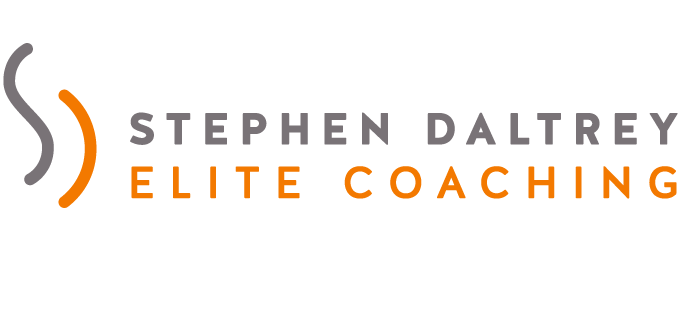 https://www.stephendaltrey.com/wp-content/uploads/2024/05/typewriter_1500x1000.jpg
1000
1500
16kadmin23
https://www.stephendaltrey.com/wp-content/uploads/2022/08/StephenDaltrey_logo_2_680x312.png
16kadmin232024-05-03 13:06:442024-05-03 13:29:11Transforming Leadership Series #6 – Words Matter
https://www.stephendaltrey.com/wp-content/uploads/2024/05/typewriter_1500x1000.jpg
1000
1500
16kadmin23
https://www.stephendaltrey.com/wp-content/uploads/2022/08/StephenDaltrey_logo_2_680x312.png
16kadmin232024-05-03 13:06:442024-05-03 13:29:11Transforming Leadership Series #6 – Words Matter
Transforming Leadership Series #2
Essential skills for leaders to excel as coaches
Leadership is fundamentally about achieving two things: getting tasks done and growing people. In busy environments, most of us are focused on getting tasks done. Good leaders understand that growing people leads to better engagement, greater performance, and increased productivity. They encourage their team members to bring solutions, not problems.
As leaders and managers, we have a variety of skills at our disposal. We can tell people what to do, sell people on a project or task (perhaps enticing with promises of bonuses or rewards), discuss with our teams, teach them models, frameworks, and tools, and provide guidance through coaching or mentoring them. When I ask my coaching clients which two management skills they use most often, they generally respond ‘tell’ or ‘discuss’.
Each of these techniques has its appropriate moment for implementation. However, among the options of ‘telling’, ‘selling’, ‘discussing’, ‘teaching’, ‘coaching’, and ‘mentoring’, only one fosters the growth of the individual completing the task. While mentoring involves leveraging my expertise to provide solutions, coaching centers on empowering the other person’s expertise.
The magic of coaching lies in the fact that as team members grapple with identifying their own solutions, they undergo significant personal growth in the process.

In my 30+ years of coaching at the highest levels, I’ve had the privilege of teaching invaluable coaching skills to numerous business leaders, enabling them to empower their teams. There are myriad skills, so here are my top 5:
- Contracting: this crucial step takes place at the start of any coaching process. It includes key issues such as confidentiality, session goals, expectations, individual roles, self-responsibility, boundaries, and timings. These techniques seamlessly extend to leaders defining project parameters and meeting agendas.
- Self-awareness: The cornerstone of emotional intelligence, self-awareness involves observing one’s internal state as a coach, the client’s responses, and the dynamics of the relationship. Did the client respond positively or differently to your last comment? What is the temperature in the relationship? Has the atmosphere suddenly become colder?
Recognizing subtle shifts in atmosphere or reactions fosters an empathetic connection, paving the way for inspiring leadership. - Open Questions: Inquiries using ‘what’, ‘when’, ‘where’, ‘how’, draw out rich and detailed responses from the client. Avoiding ‘why’ prevents the conversation becoming an interrogation. Leaders who use open questions learn a great deal about their team. While closed questions are used sparingly in coaching, leaders can use them to ensure commitment to an action plan: ‘will you’, ‘do you’.
- Listening: I believe that as much as 50% of the benefit of coaching is giving busy, often stressed individuals the space to offload and be received without judgement. Cultivating active listening skills not only allows leaders to support their team members but also significantly boosts motivation and facilitates positive outcomes with minimal effort. If only we were all taught active listening at school!
To practice active listening, try this:
An excellent way to practice active listening is run a series of exchanges between you and a friend (A & B). In the first round, A speaks, and B listens without making any sound, relying only on body language and facial expressions to show they are listening. After a couple of minutes, stop the participants and ask B how that felt. They may well express frustration (“I wanted to say XYZ!”). But ask A if they felt listened to, and they will generally say yes. The lesson is that we do not need to add our input; providing space for the other person to express themselves without interruption is enough.
Develop the exercise by switching roles, and this time allow A to include para-verbals such as ‘ah-ha’, ‘uh-hum’, to signal their understanding, but still no words. This reinforces the idea that a listener doesn’t need to add comments to make the speaker feel heard and understood.
A final round uses non-verbal and para-verbal responses and introduces paraphrasing. Paraphrasing entails the listener echoing back a few key words to demonstrate their comprehension, i.e. “getting the project completed is important to you”, “I understand you were frustrated”, “you found that situation difficult”.
- Review the goals achieved and agree on an action plan. A coaching session starts with the client identifying goals for the meeting and the coach supports them in discovering their solution to achieving it. The session ends with the client’s confirmation and commitment to a plan and timeline to take appropriate actions. A good leader employs these techniques at every team meeting, resulting in clear outcomes, agreed action plans and everyone leaving the meeting feeling positive.
Use the contracting, self-awareness, open questions, listening and reviewing techniques in your next meeting and let me know how you get on.
LATEST ARTICLES
- Transforming Leadership Series #6 – Words Matter
- Transforming Leadership Series #5 – Inspiring Diverse Workforces
- Transforming Leadership Series #4 – 5 Ways for Leaders and Managers to become Effective Coaches
- Transforming Leadership Series #3 – Inspiring Leaders to Invest in Personal Skill Development
- Transforming Leadership Series #2 – Essential skills for leaders to excel as coaches
- Transforming Leadership Series #1 – Transforming from ‘Leader as Manager’ to ‘Leader as Coach’
- Wealth Psychology in the music & creative industries
- The Wisdom Of Resistance: Why Not Keeping New Years Resolutions Can Be Good For You
LATEST ARTICLES
 https://www.stephendaltrey.com/wp-content/uploads/2024/05/typewriter_1500x1000.jpg
1000
1500
16kadmin23
https://www.stephendaltrey.com/wp-content/uploads/2022/08/StephenDaltrey_logo_2_680x312.png
16kadmin232024-05-03 13:06:442024-05-03 13:29:11Transforming Leadership Series #6 – Words Matter
https://www.stephendaltrey.com/wp-content/uploads/2024/05/typewriter_1500x1000.jpg
1000
1500
16kadmin23
https://www.stephendaltrey.com/wp-content/uploads/2022/08/StephenDaltrey_logo_2_680x312.png
16kadmin232024-05-03 13:06:442024-05-03 13:29:11Transforming Leadership Series #6 – Words Matter
Transforming Leadership Series #5 – Inspiring Diverse Workforces








Leave a Reply
Want to join the discussion?Feel free to contribute!